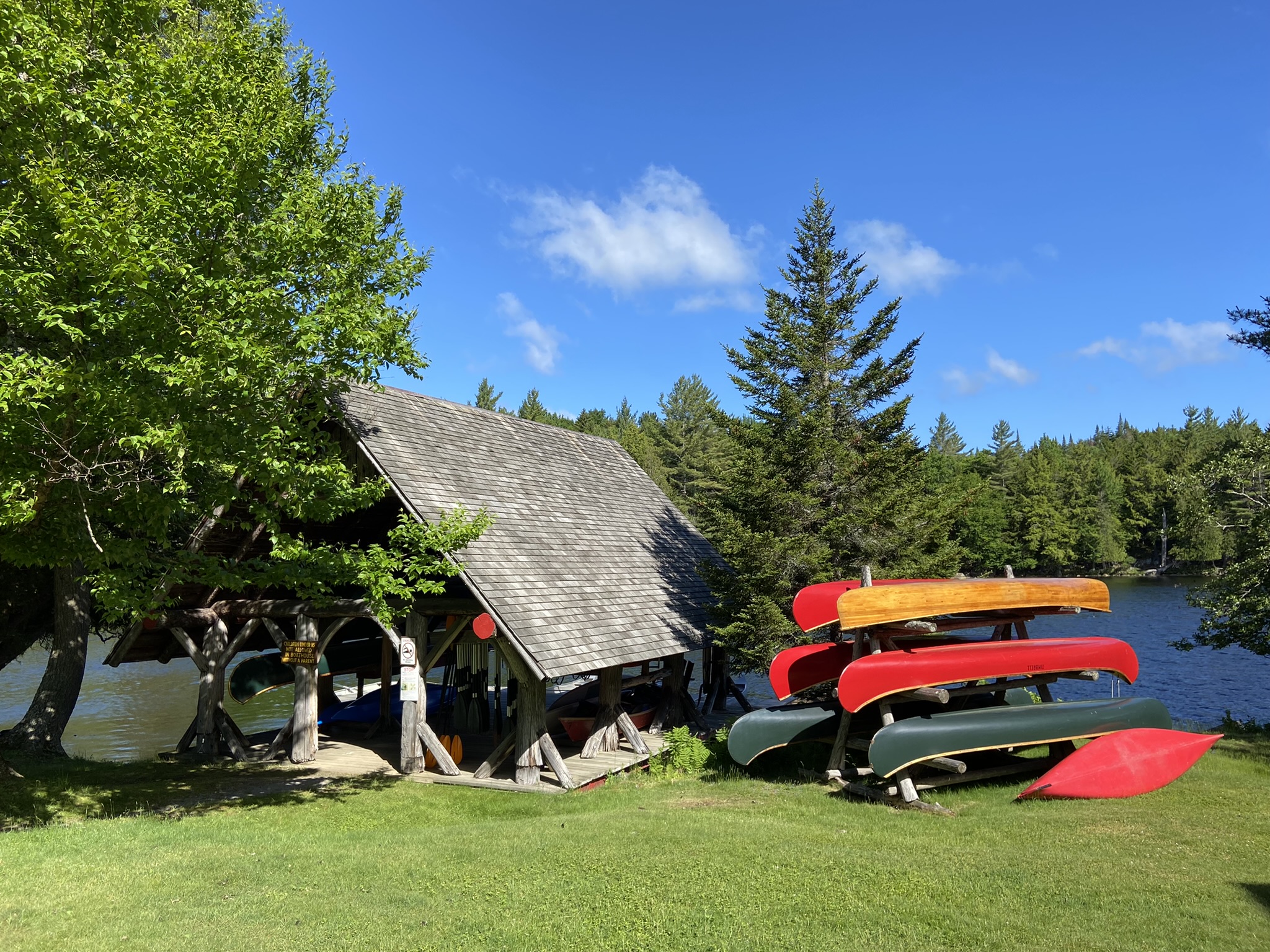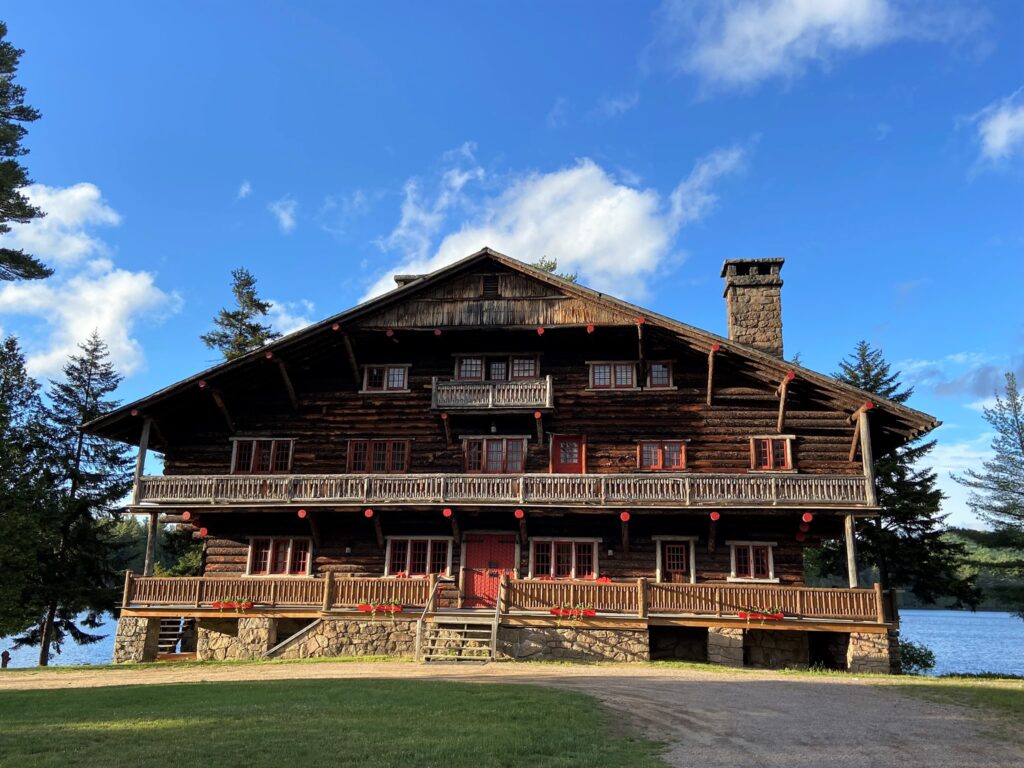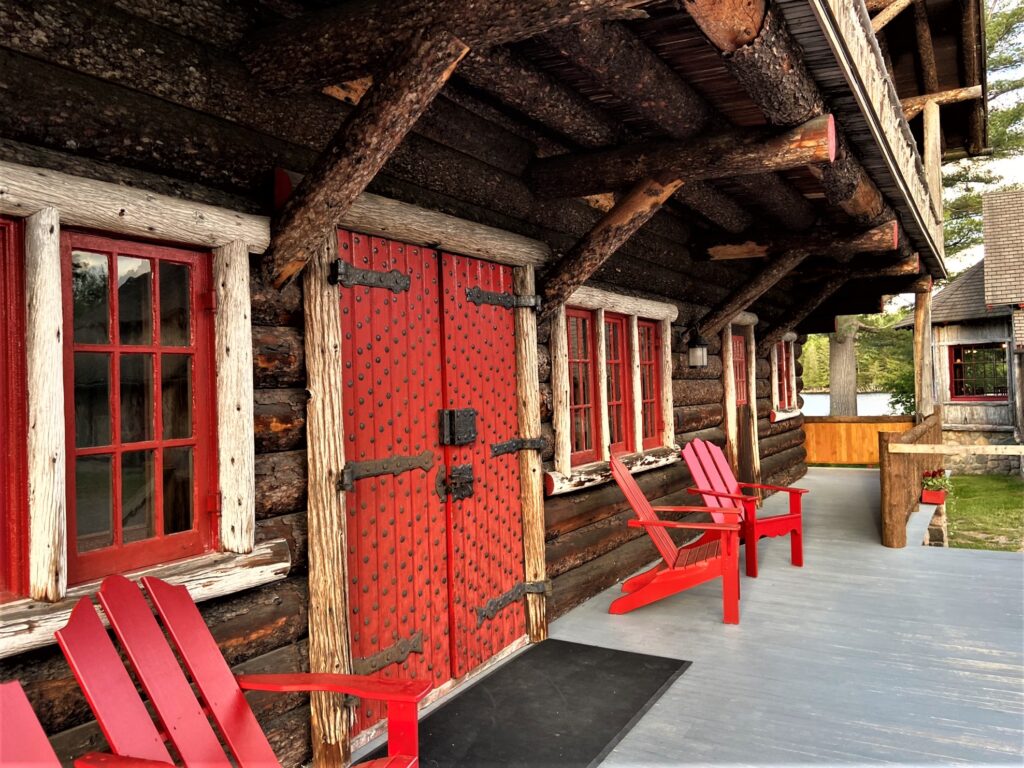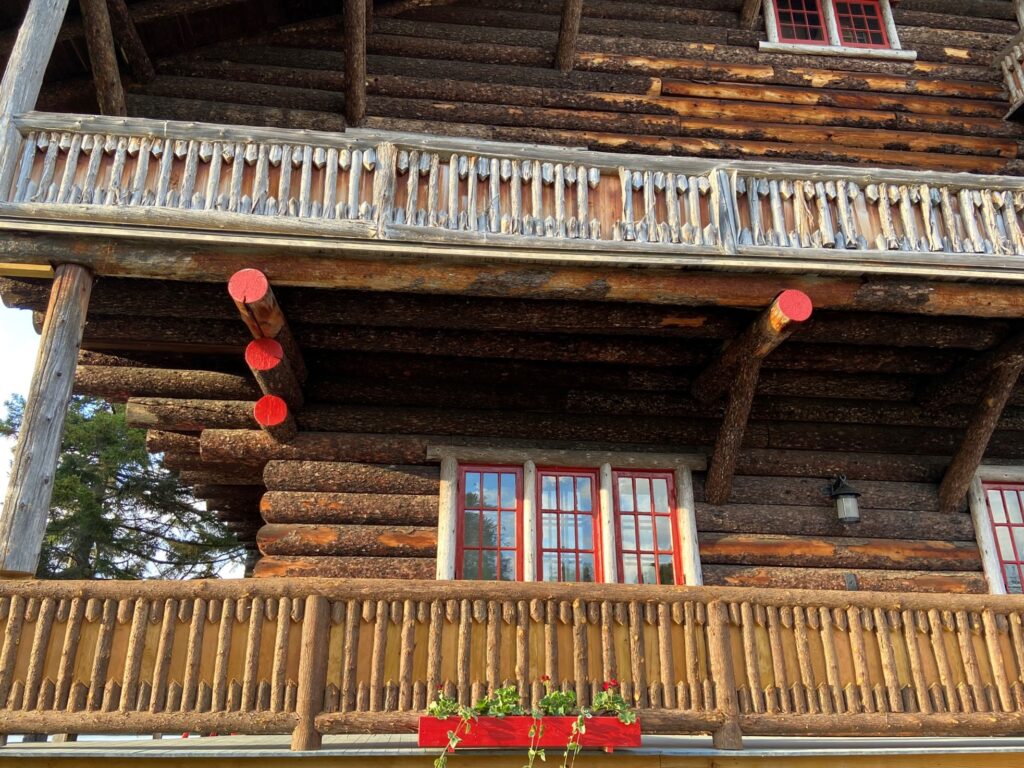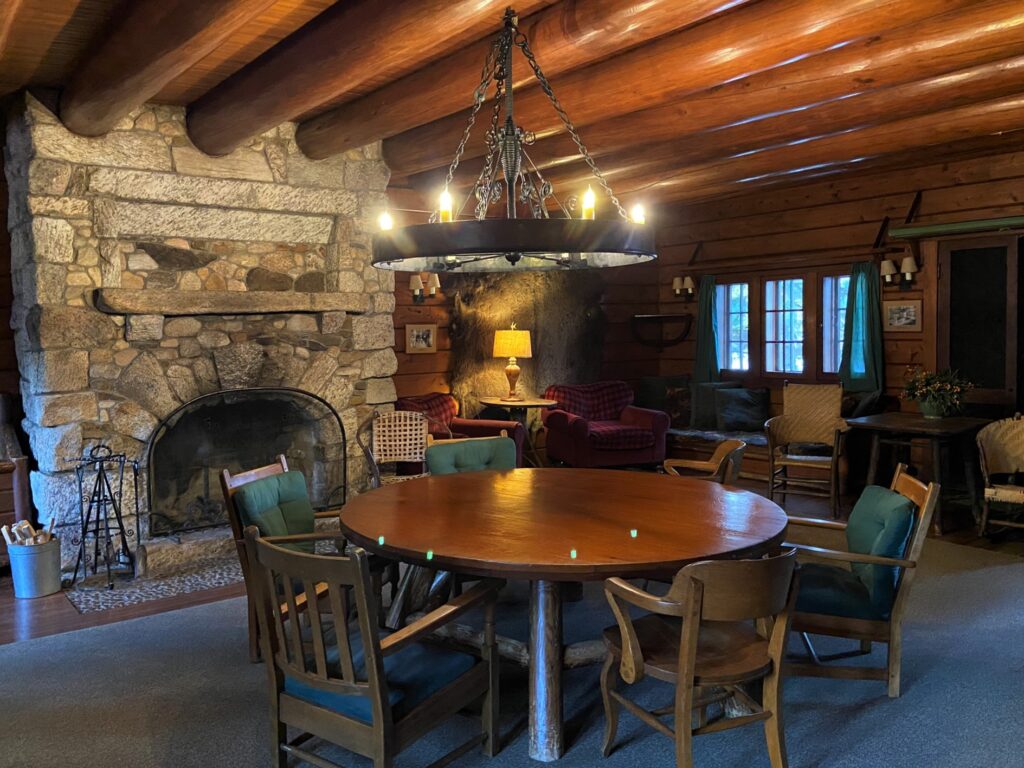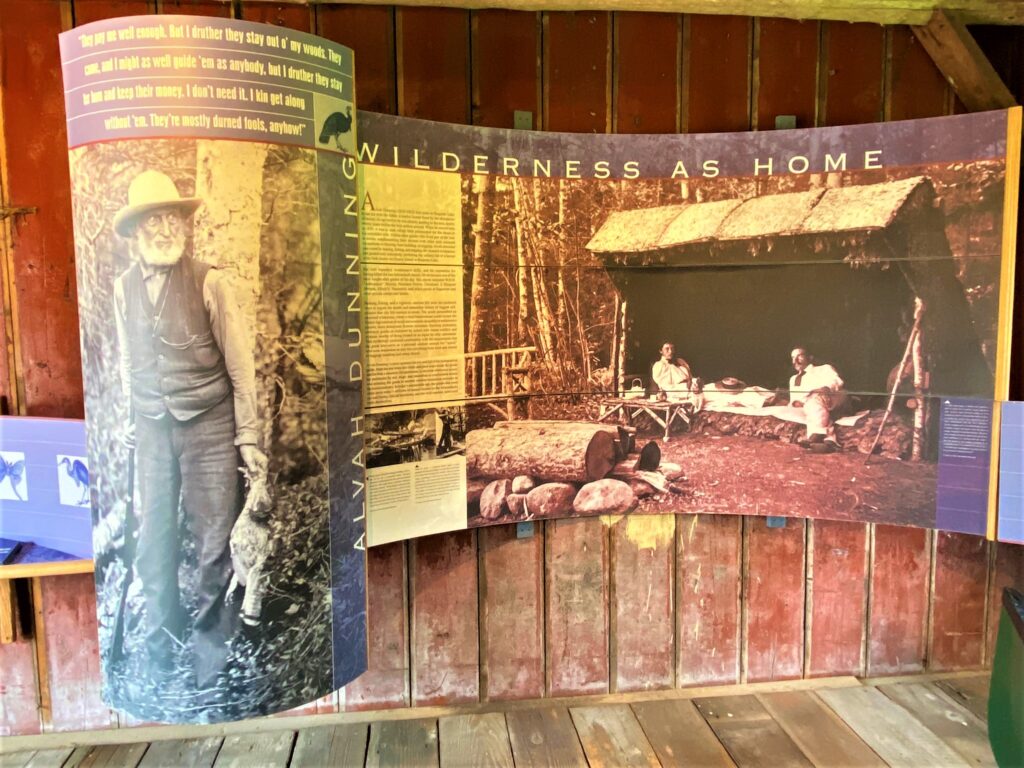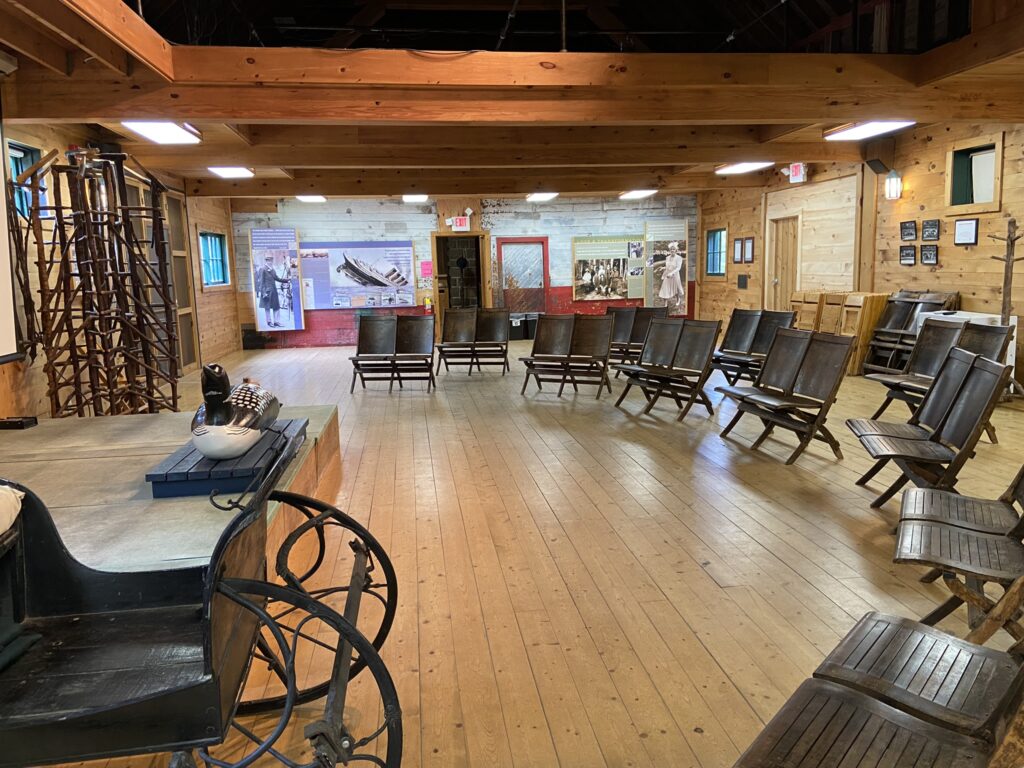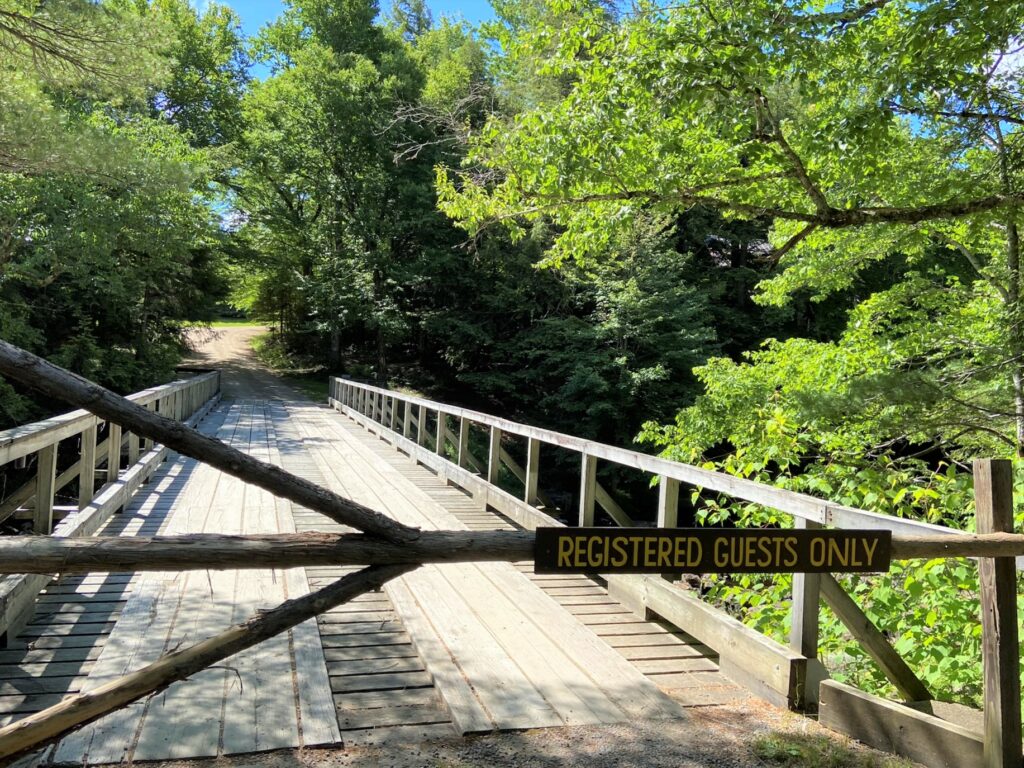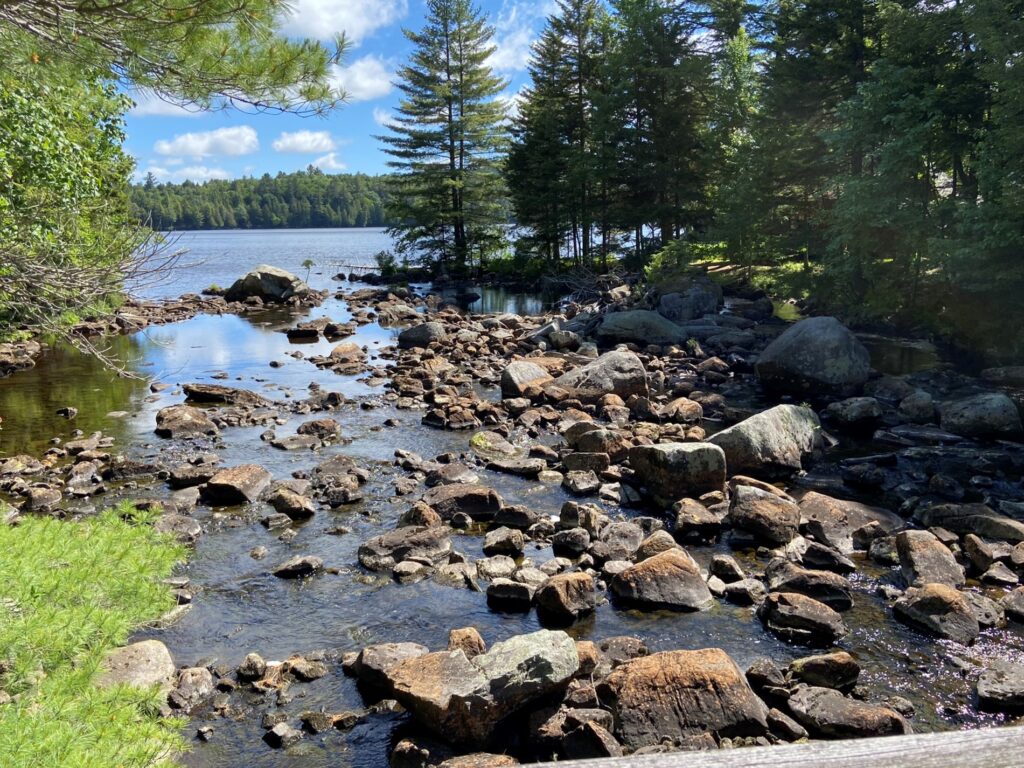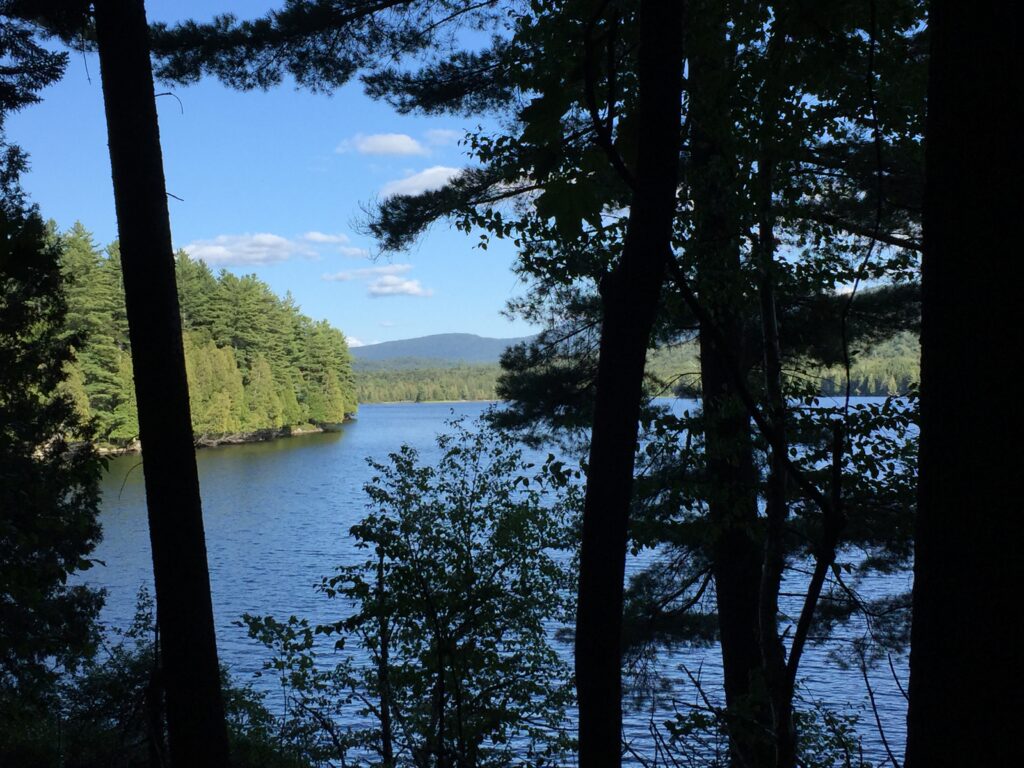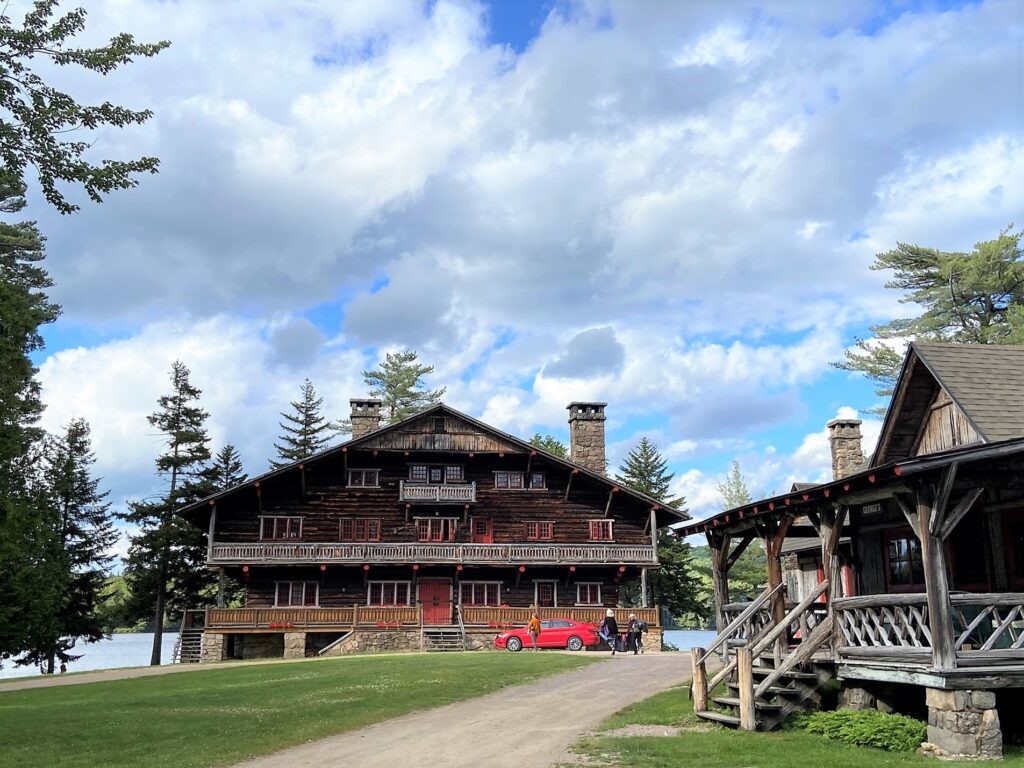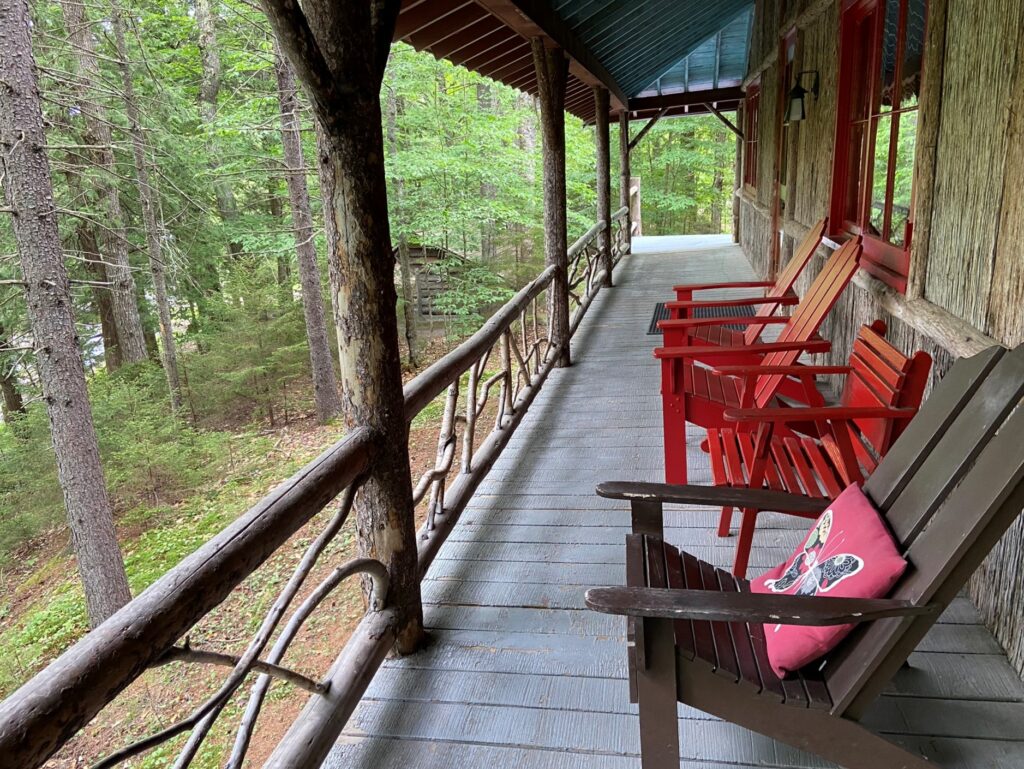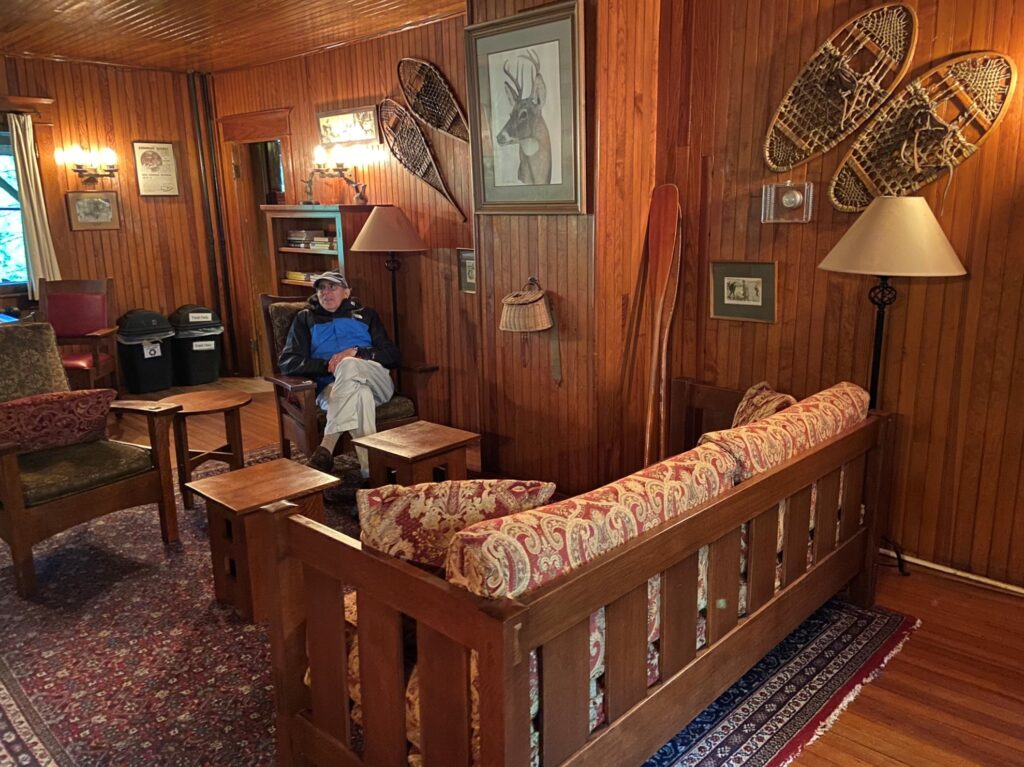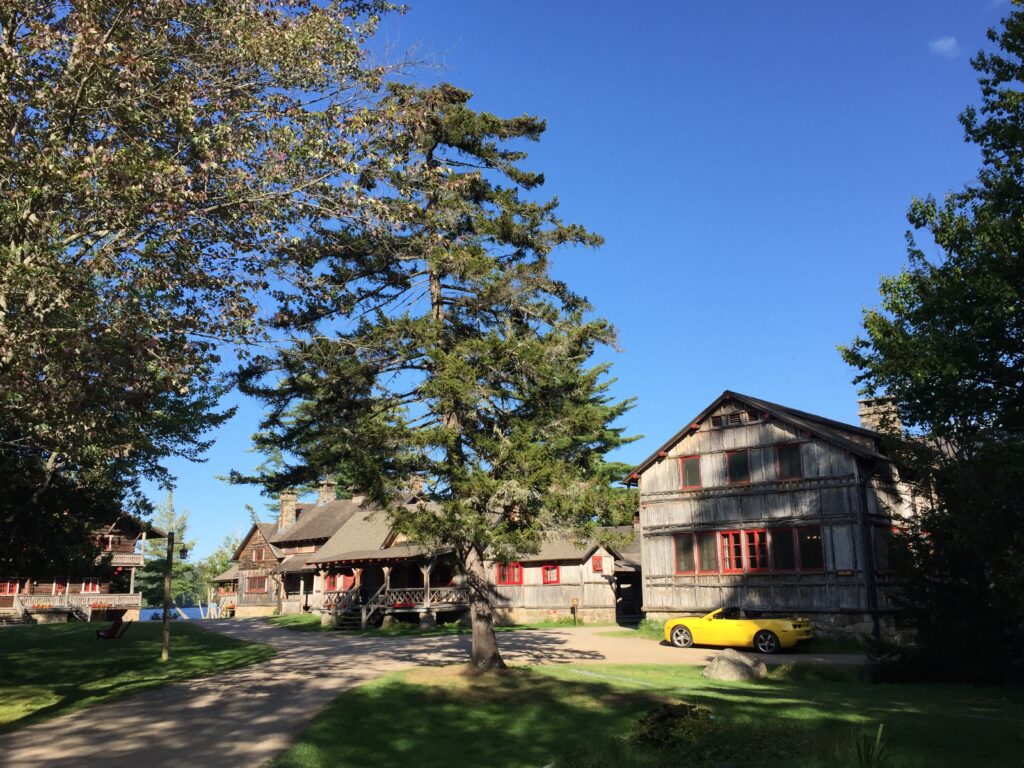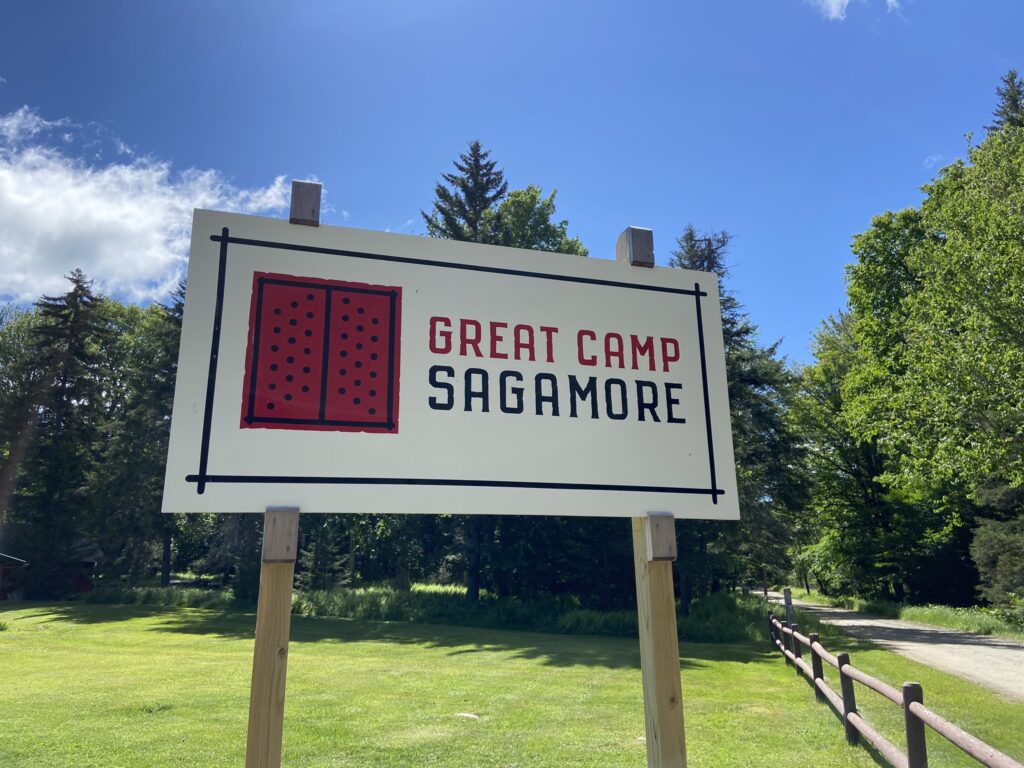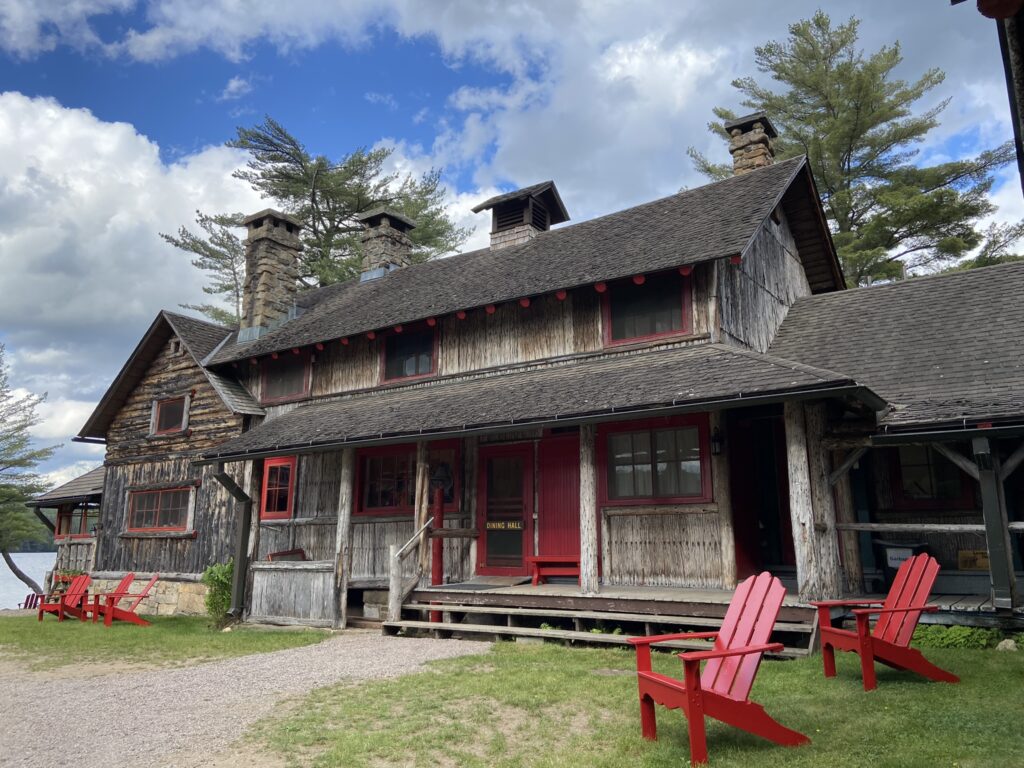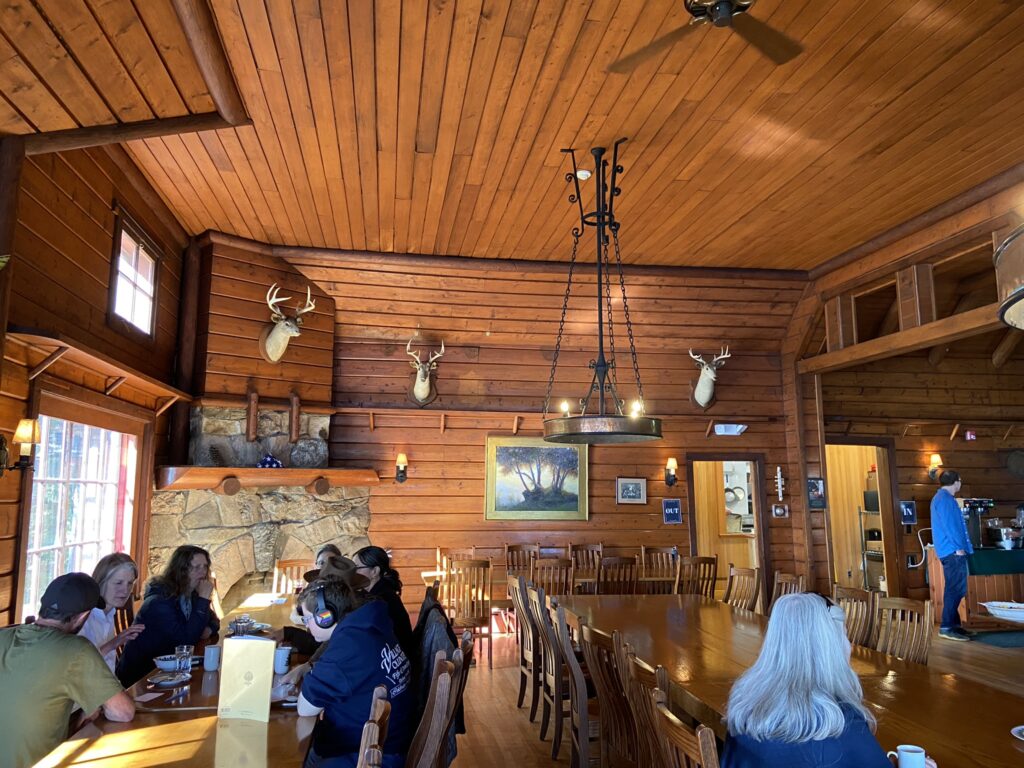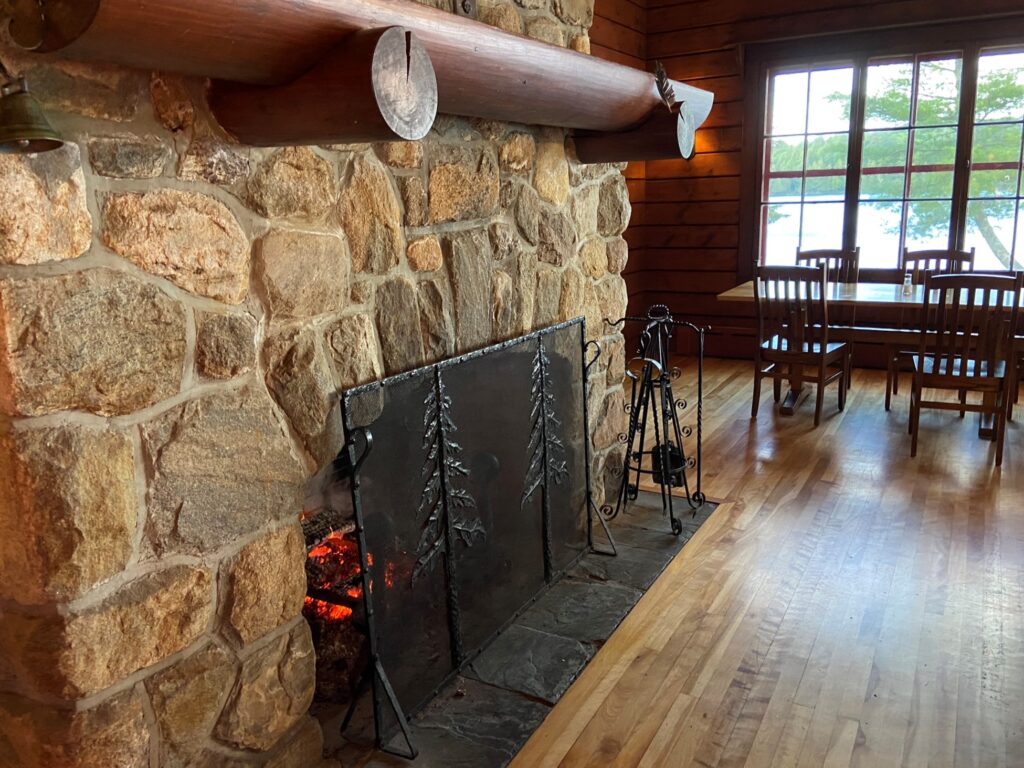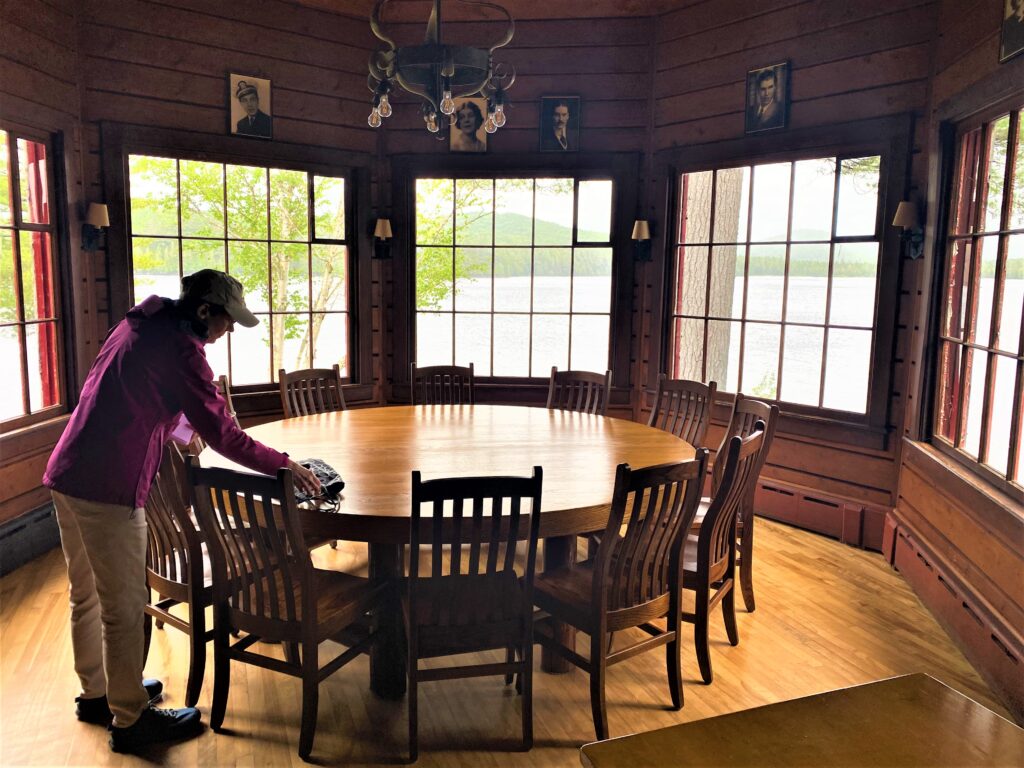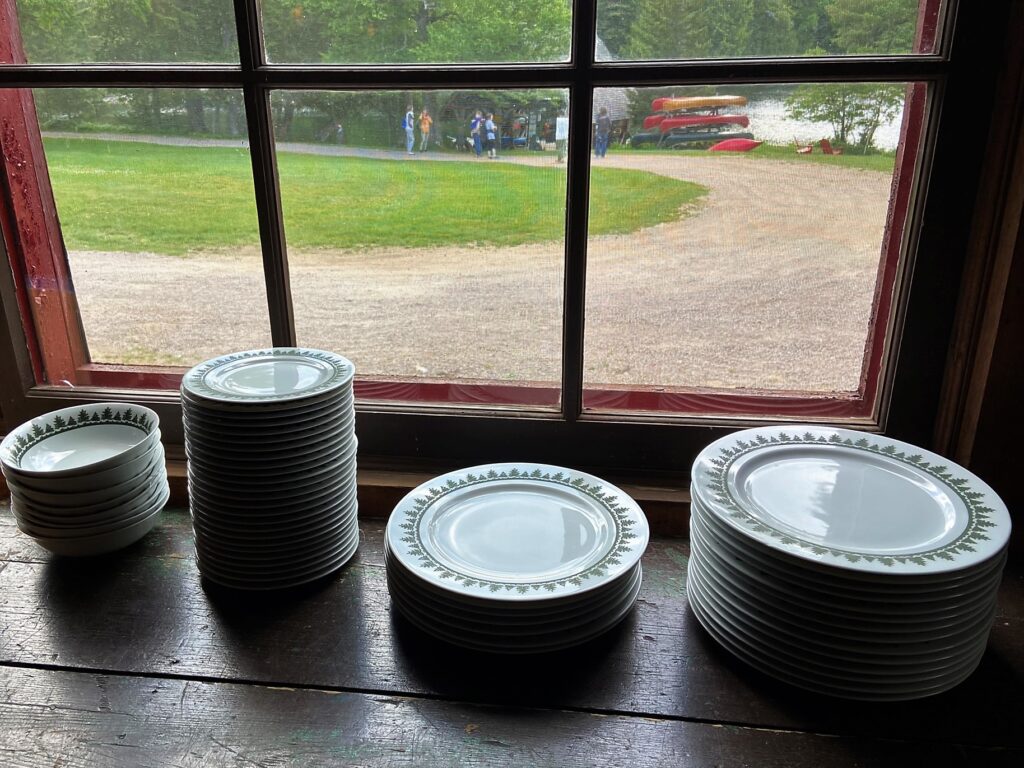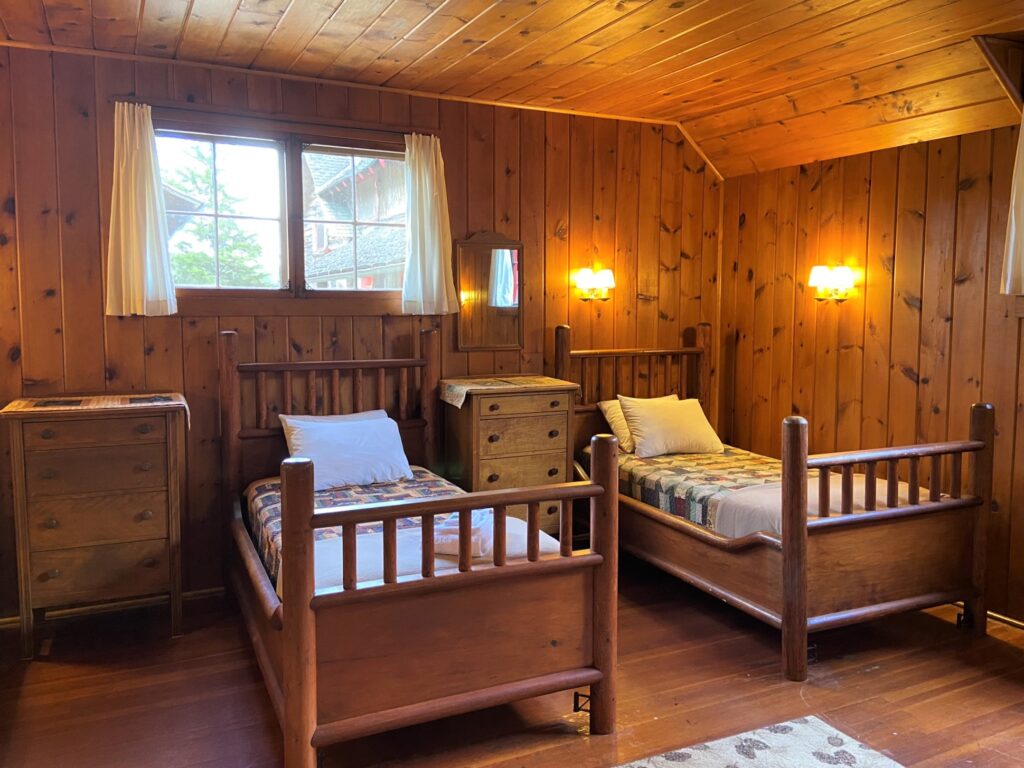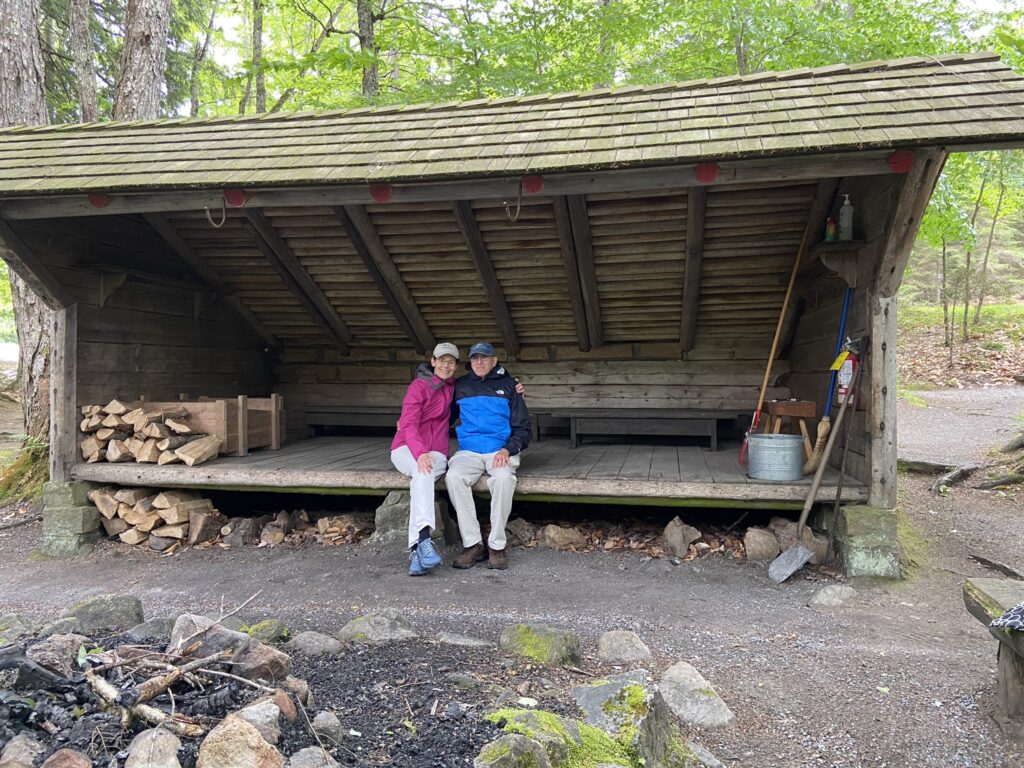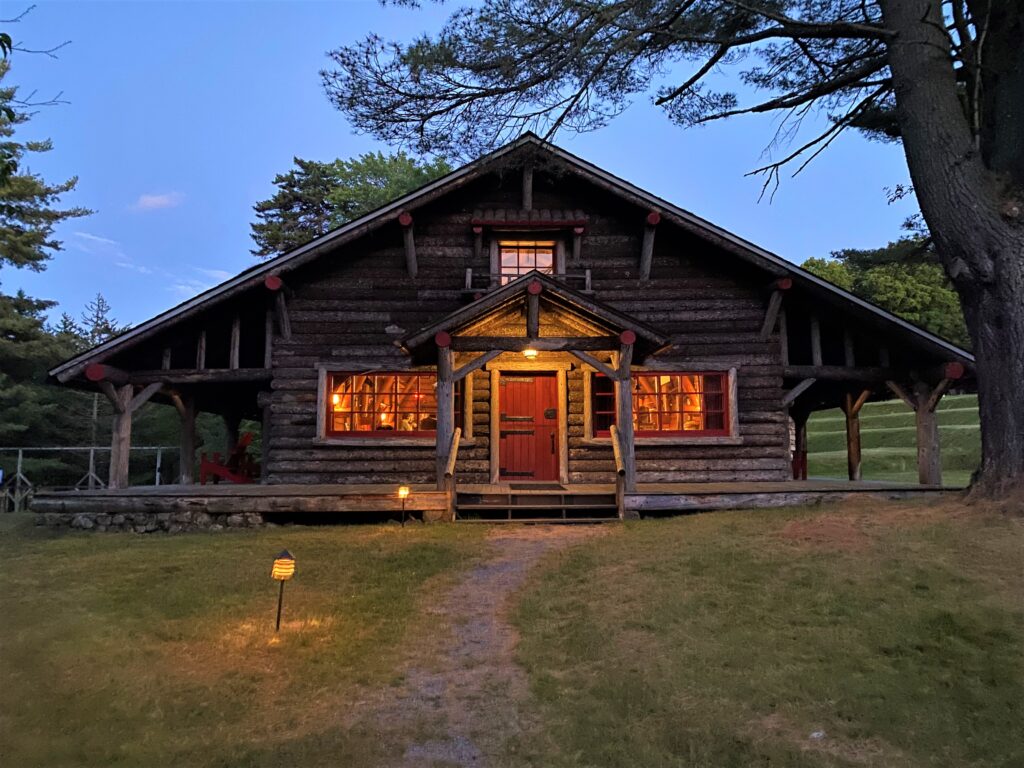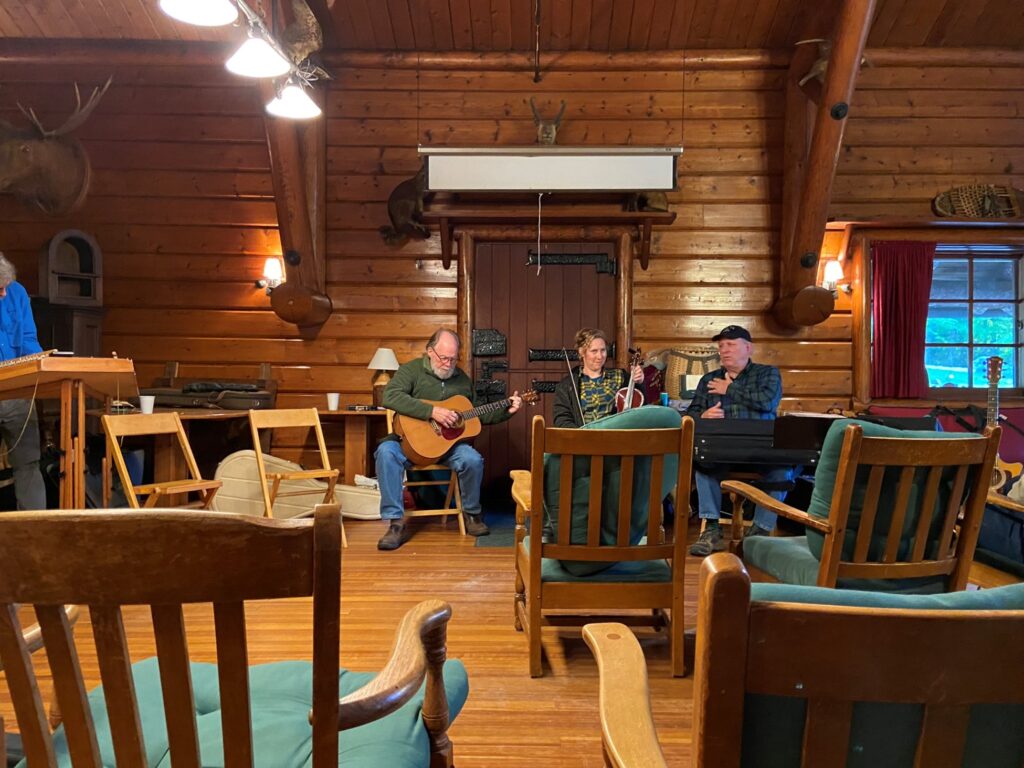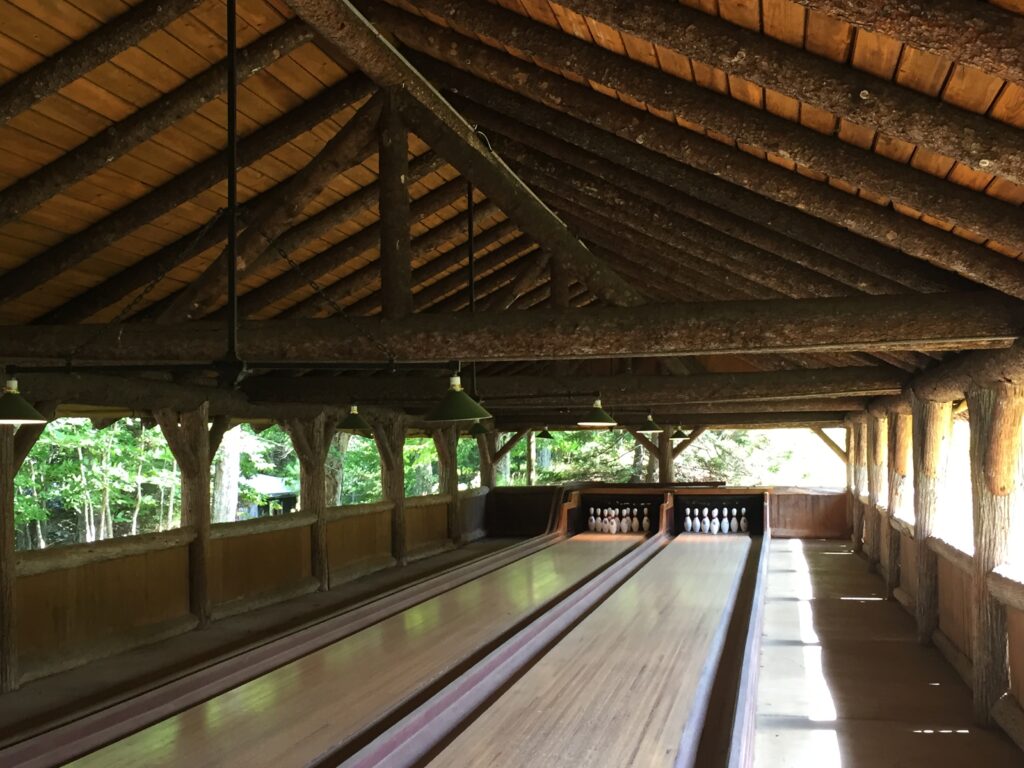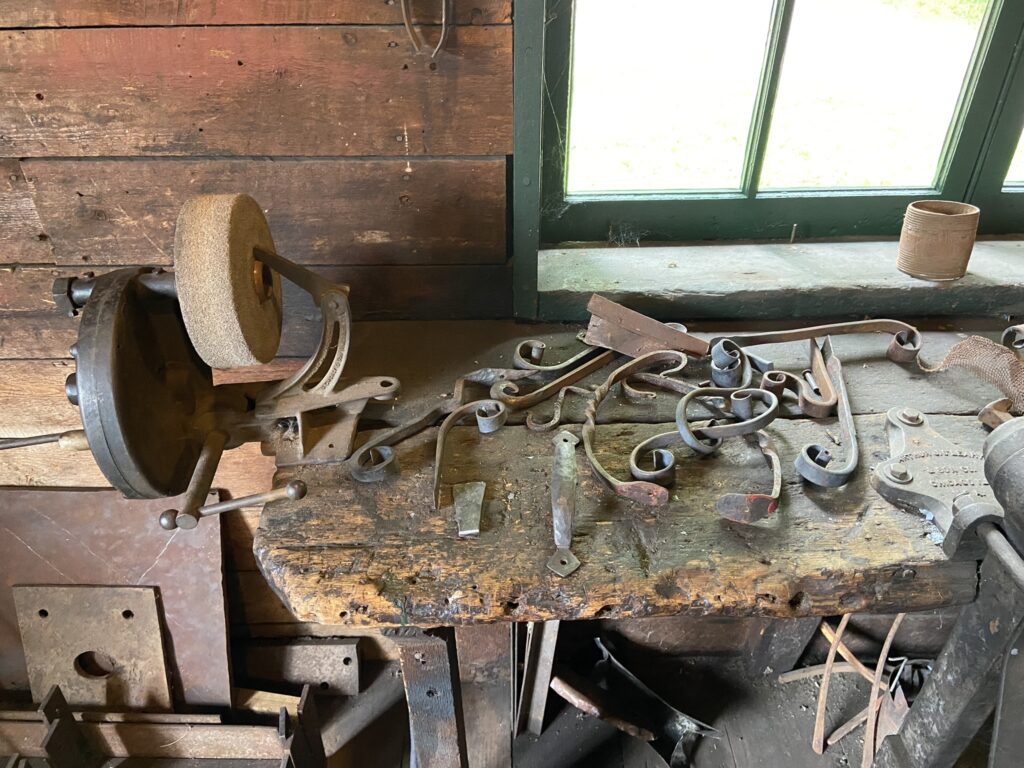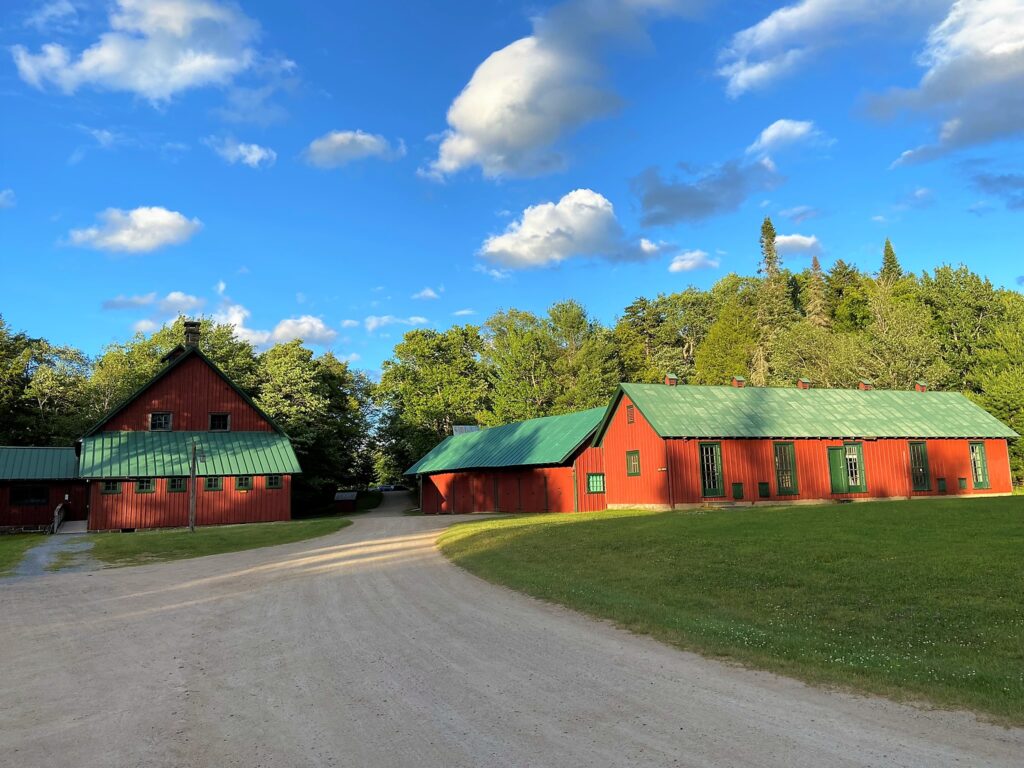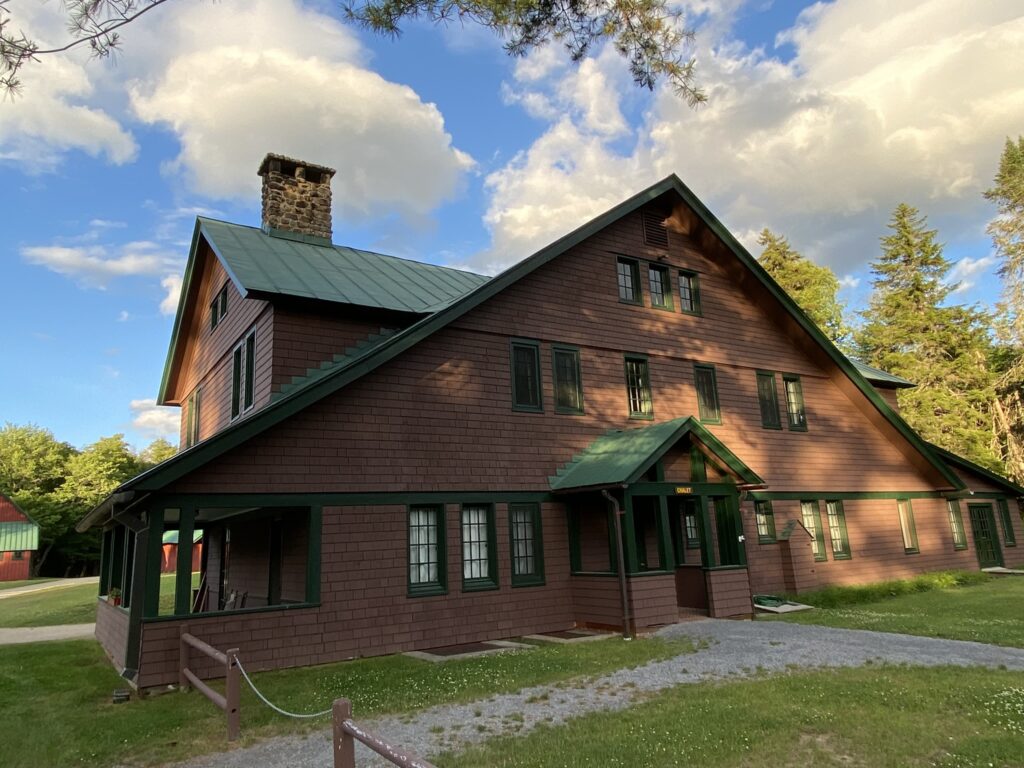A National Historic Landmark, an educational center supporting a sense of community, and a place of inspiring natural beauty: Great Camp Sagamore in northern New York’s Adirondack Mountains is all these as it celebrates its 125th anniversary in 2022. As people re-engage with each other during the ongoing pandemic, Sagamore’s role as a space for connection and renewal—formerly for one wealthy family and now for the public—is more meaningful than ever. The Sagamore Institute of the Adirondacks offers programs, events, and tours, as well as recreational opportunities. Programs take advantage of Sagamore’s wilderness lakeside location to help people discover Adirondack history and traditions, learn new skills, and share ideas while staying on-site in its historic structures.
Built as a luxurious summer retreat on 1,526 acres and purchased by Alfred G. Vanderbilt in 1901, Sagamore was almost destroyed in the 1970s. Only the creation of a nonprofit institution saved its rustic-style buildings, which are typical of the architecture that influenced the famous guest lodges in Western national parks such as Yellowstone.
The Story of Great Camp Sagamore
In the late 19th century, America’s wealthiest families began to see traveling into wilderness areas to relax as stylish, and the remote Adirondacks became popular. Thomas Durant built railroads and purchased about 750,000 acres of land around Raquette Lake, and in 1874 he summoned his 25-year-son, William West Durant (1850–1934), from Europe to develop the land. Durant wasn’t a trained architect, but he was inventive and a quick learner. For more than two decades, he built multi-building “camps”—called “great camps” by preservationists in the 1970s—for rich families eager to vacation in the woods while displaying their wealth.
Durant built Sagamore, his last and largest great camp, for himself between 1895 and 1897. Designed to be remote, it is reached by a 4-mile-long gravel road and sited on a point of land on the edge of Sagamore Lake, with panoramic views of surrounding mountains. The iconic three-story Main Lodge resembles a Swiss chalet, dominating nearby buildings like the Dining Hall and Boathouse. The lodge, a wood-frame building with slab log siding, has first- and second-floor porches with rustic wooden railings; other buildings use cedar bark as siding.
A poor businessperson, Durant sold Sagamore in 1901—at a loss. He found a buyer in 24-year-old Alfred G. Vanderbilt, one of the country’s wealthiest young men. Alfred loved horses, sports, and the outdoors, and appreciated “roughing it” at Sagamore—in a Gilded Age version of glamping—while living comfortably, though at a different level from his mother’s mega-mansion in Newport, The Breakers. In 1911 Alfred married Margaret Emerson McKim, who shared his interests and brought their two young children to Sagamore. The couple entertained extensively and added tennis courts, an open-air bowling alley (still used by guests), and a hydroelectric plant. Tragically, Alfred died in 1915, going down with the Lusitania.
Margaret, who remarried twice, continued to visit Sagamore for almost 40 years, taking her children and grandchildren and building cottages for them. At its peak, Sagamore had more than 50 buildings. She enjoyed games and sports and brought people together for conversations, including musicians, artists, and celebrities. But after World War II, great camps were viewed as impossible-to-maintain relics. Margaret gifted Sagamore to Syracuse University in 1954, hoping to protect it.
Syracuse sold Sagamore’s 1,526 acres to New York State in the mid-1970s. The land falls within New York State’s 6 million-acre Adirondack Park, established in 1892, and the state planned to demolish the great camp under the park’s “forever wild” provision. Preservationists Barbara Glaser and Howard Kirschenbaum managed to form a nonprofit to acquire Sagamore’s buildings (and ultimately almost 18 acres), with the commitment to preserve and use the camp in a way suitable for its wilderness location. By 1975, Sagamore began a new life as an educational institution.
Visiting Great Camp Sagamore
Today visitors can experience Sagamore from late May through October by signing up for a tour, outdoor excursion, or event; taking an educational- or outdoor-themed program with on-property overnights in comfortably rustic accommodations (most with shared bathrooms); or booking a two-night stay. More than 10,400 people took a tour or attended a program in 2021. Emily Martz, Ph.D., Executive Director, says of Great Camp Sagamore’s programs, “We use the beauty and power of the location and the historic buildings to teach people about the interdependence between people and nature. Our goal is that they appreciate their individual responsibility to nature and community. These programs get people away from the noise of everyday life and remind them of what really matters.”
New in 2022, alfresco Music on the Green concerts take place Wednesday evenings in July and August on the Main Lodge’s lawn, and attendees can reserve dinner in the Dining Hall. One tip: although Sagamore is well-signposted off Route 28, Internet-enabled GPS mapping is not always available, and cell service at Sagamore is nonexistent. It’s best to plan a route ahead.
Sagamore’s two-hour walking tours provide a great introduction to the history and architecture of the 27-building campus. Visitors enter the Main Lodge, Dining Hall, and other buildings the Vanderbilts used; guides also discuss the lives of the camp’s workers, exploring service buildings like the school, blacksmith shop, and worker housing that made Sagamore like a small village. Informational panels in some buildings have vintage photos that show relaxation and work here. Guided paddles and hikes on Sagamore’s grounds are offered too.
Multiday, all-inclusive educational programs are the heart of Sagamore’s mission. More than two dozen are offered each season, generally three days long. Whether programs explore the arts, wellness, outdoor activities, or history, all include staying in the Main Lodge or other buildings (Sagamore has about 70 beds) and eating in the Dining Hall. Family-style buffet meals are a highlight for the tasty food and the camaraderie with other overnight guests. The room’s long tables and serene lake and woodland views encourage the sharing of ideas, as they did in the Vanderbilt era.
Among the popular arts programs are the Mountain Music Week and Roots and Branches; the latter is an endowed workshop that offers full scholarships so young musicians can learn about traditional Adirondack music from regional performers. Other arts programs include a Women’s Writing Workshop, plein air painting and photography workshops, and quilting, basket weaving, and woodcarving sessions. Outdoors lovers can choose from programs such as a Zen Fly Fishing Retreat and Cycle the Adirondacks, with guided rides from local company Bike the Adirondacks. Led by Sagamore’s historian, Durant’s Gilded Age Camps features visits to Uncas and Pine Knot, two other Durant great camps. Longtime program favorites are five-night Grandparents and Grandchild Camps with music, environmental and nature experiences, and outdoor fun.
Alternatively, guests can book a Simply Sagamore two-night stay, including meals and access to Sagamore’s Boathouse, bowling alley, miles of on-site trails, and a historic tour, and create their own Adirondack retreat.
Volunteers from all over are part of Sagamore’s community, and Sagamore members can support it during several volunteer working weekends. Food and lodging are provided for a nominal fee, and volunteers contribute skills such as painting, sewing, and clearing trails. There’s also an annual Gala & Benefit for Historic Preservation (August 6 in 2022), and for Sagamore’s 125th anniversary, the theme is “Celebrating Community at Great Camp Sagamore,” recognizing the visitors, artisans, musicians, and local businesses that help maintain this unique Adirondack treasure.
Side Dish
Meals are included in Sagamore stays, but those exploring independently can combine a meal and a cruise on nearby Raquette Lake with family-owned Raquette Lake Navigation. Brunches, lunches, and dinners with different menus are available.
Linda Cabasin, a travel editor and writer, covered the globe at Fodor’s before taking up the freelance life. A tour at Sagamore in 2019 inspired a return visit in 2022 for a weekend stay. She’s a contributing editor at Fathom. Follow her on Instagram and Twitter at @lcabasin.
Top photo: Sagamore’s original Boathouse from 1897 still serves guests who want to paddle on the lake.

